In the age of information, trying to persuade consumers to buy your product, in particular, can feel like a spaghetti-throwing experiment. Companies are trying to catch the attention of consumers who have more at their fingertips than a human could have imagined possible a mere 30 years ago.
As PR stunts and socially impactful messaging churns away in the background, ecommerce companies are on the front lines of not just catching attention with ads and content but also hooking users on their websites. Companies are realizing more and more that online stores need to be an experience that speaks to consumers just as much as brick-and-mortar stores do.
Take the words of Glossier founder Emily Weiss, who recently said she wouldn’t sell the company’s products on Amazon, because “When you look at a platform like Amazon, no woman has ever told me that their criteria for best mascara was what was fastest or cheapest. That’s not how people are buying emotional things. . . . [W]hat users are actually doing and wanting is one of breadth of connection.”
By keeping Glossier products on Glossier’s website, the company controls the experience of consumers, which is becoming more and more important for ecommerce.
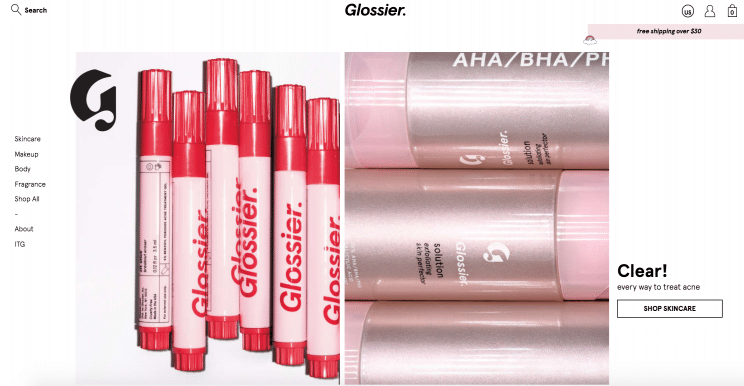
Glossier’s highly curated aesthetic is on display on their website’s homepage.
By conceptualizing ecommerce as a full, intensive brand experience, companies are figuring out how to more effectively lure people toward purchasing online. This means more interaction, easier browsing, and better catering to how people want to shop online now — and visual product search is at the forefront of this trend.
Visual product search harnesses user-generated content
For shoppers, discovery happens everywhere. Although they might browse company websites or brick-and-mortar stores, they are also gathering ideas from more places than ever before. Magazines and television are still there, but now there’s also Instagram and YouTube.
Consumers are pulling ideas and being influenced more and more by content that is made by other people like them (user-generated content, or UGC) as opposed to relying heavily on brand-curated content. This is content that they save, return to, screenshot, send to friends, and keep in apps or desktop folders. This content can affect purchases for everything from electronics to vacations.
Visual product search allows you to harness all of this material. You already know that, everywhere they look, consumers are seeing — and saving — images that inspire purchases. When you put a visual product search on your website, you render all of those images immediately shoppable, connecting directly with how users want to move from inspiration to purchase.
Take this mobile screenshot from a street-style Instagram account:
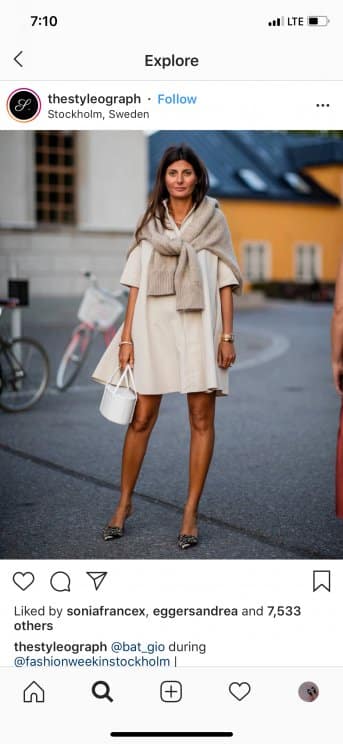
A quick visual product search on Intu will return every dress they have with a similar silhouette, no need to describe the dress, fiddle with filters, or sort through pages of mediocre results:
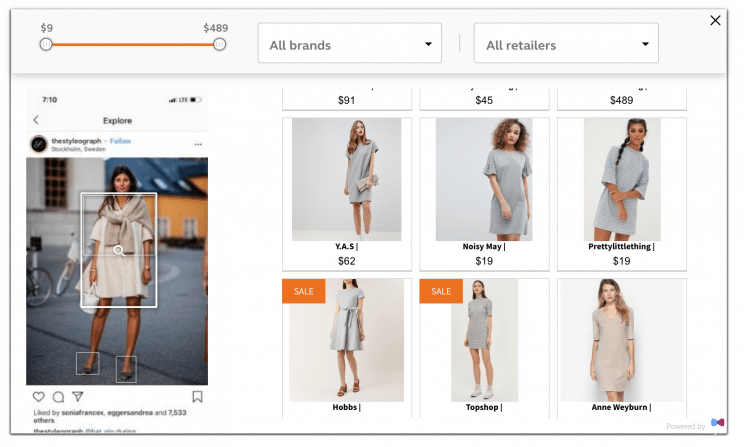
This is also true on mobile, where ecommerce sites can be particularly clunky. Adding a visual product-search feature streamlines how shoppers use mobile sites. Given the proliferation of mobile apps like Instagram that are heavily based in visual UGC, tapping into these on mobile is a great way to drive mobile discovery.
Deep on-page discovery with visual tech
Visual product-search tools encompass more than just the user-driven visual search itself. Although this is a powerful ecommerce tool, it’s just the tip of what visual search AI can do.
When consumers are on your website and looking at items, you want them to go deep into your inventory, spend time on your site, and be pointed toward items that they will like. You can help consumers discover by offering personalized recommendations in key places: search results, product pages, emails, and checkouts.
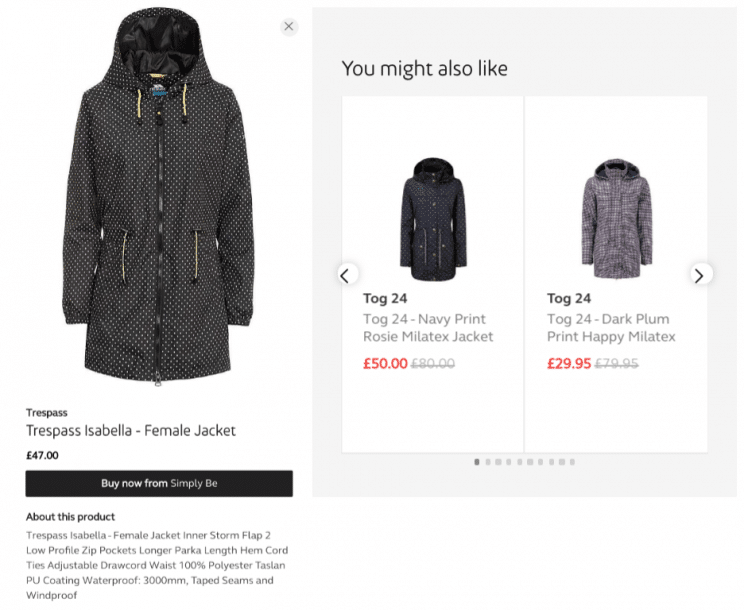
Intu shows similar options if a user clicks on an item to bring up the “quick view” option.
Visual product-search technology personalizes by using the items a user has pulled up and recommending similar items. a shopper is browsing, they see more of what they — and you — know they like.
That discovery drives conversions. In 2017, Kibo reported that 44% of consumers were influenced to purchase by personalized product-page recommendations; 92% of customers have been influenced by personalized shopping-cart recommendations.
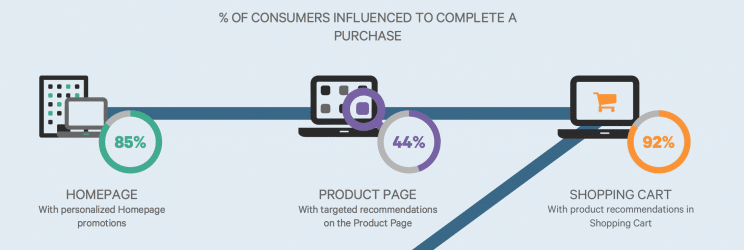
Intu shows similar options if a user clicks on an item to bring up the “quick view” option.
Visual product-search technology personalizes by using the items a user has pulled up and recommending similar items. So when
That discovery drives conversions. In 2017, Kibo reported that 44% of consumers were influenced to purchase by personalized product-page recommendations; 92% of customers have been influenced by personalized shopping-cart recommendations.
What a company is doing by offering these personalized recommendations is prompting customers to explore options, pulling them further into their site and products. More time spent viewing items and comparison shopping means conversions: In 2017, Moz reported that “ time spent on a website and conversion rate [had a 0.6 correlation]. By increasing time on site by 16%, conversion rates ramp up 10%. Pages per session also correlated solidly with revenue growth (0.25).”
Rethink what shopping means for 2019
Ecommerce was a huge shift to the way we shop. Even the most basic of early online stores represented a change in the way we found, compared, and purchased products.
But we’ve left those early days behind — now ecommerce is far beyond simple stores for online orders.
You can shop in nearly every social app, and many ecommerce retailers have their own apps. You can buy secondhand items in e-marketplaces that verify designer clothing. You can custom order any item. And you can get handmade items, from people 5,000 miles away, that you never would have seen before.
Now, ecommerce sites and apps have to be about more than just displaying a picture of an item and processing a card number.
Now, shopping online is an experience as much as it is a transaction. With visual product-search tech, you can rethink how people shop on ecommerce sites:
- Consumers can directly add items from lookbook pages.
- Consumers can comparison shop across 1,000 items instantly.
- Consumers can discover personalized recommendations on any page.
These add shoppability to your entire website and push customers to engage with purchasing mechanisms across your web presence.
Add visual product search to your site in 24 hours
If you are a retailer looking to add visual product search, superior tagging, superior text search, or shop-the-look features, contact Syte to see how you can get this tech up and running in 24 hours.